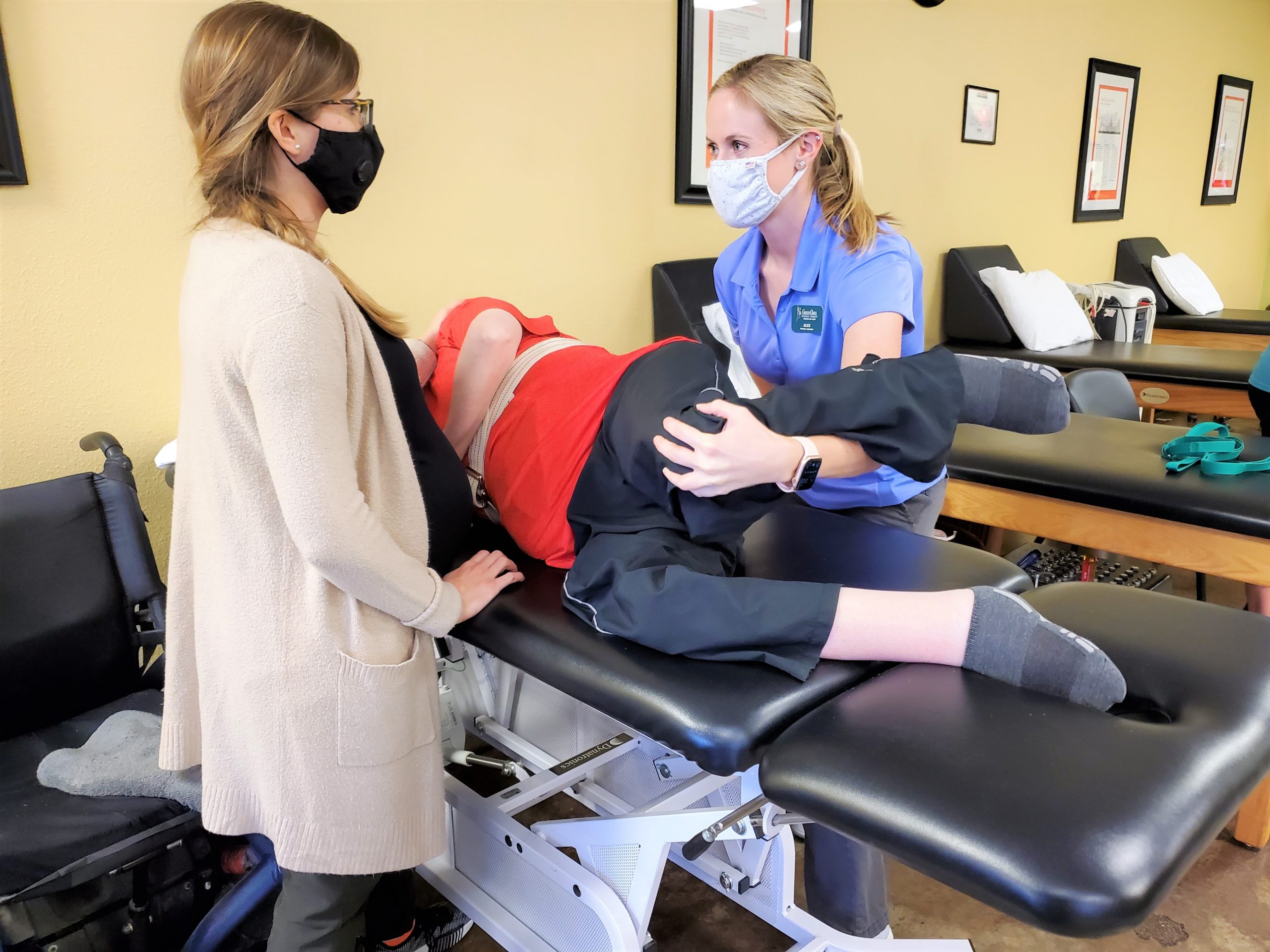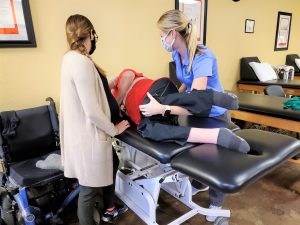Hip Flexor Stretching For Patients With SMA

In previous articles, we have discussed different techniques for manual stretching to improve functional mobility and range of motion for Michael, my patient with SMA. We have discussed the importance of maintaining and increasing range of motion in joints such as ankles, knees, hips, elbow, hand, and cervical spine. These are important to allow for the most independence with activities of daily living as possible.
Recently, we have added a more aggressive stretch to increase the range of motion of Michael’s hip flexors to allow for more comfort in a seated position, along with increased ability to lay in a supine position. Since Michael has a fused lumbar spine, this was a stretch we were unable to perform until his flexibility increased enough to allow for this position. The hip flexor muscle, psoas, attaches to the lumbar spine, therefore increasing lumbar lordosis, if this muscle remains decreased in length.


Until recently, Michael was unable to lay in a side lying position that would allow for a stretch on the hip flexors without increasing lumbar lordosis too much. With two people, we first transfer Michael into a side lying position, and have one person support his upper body to ensure he remains safely on the therapy table. The other person then uses one hand to support his hip and keep his body from turning while keeping the top knee bent and pulling his leg back into extension, to increase the length of his hip flexors while maintaining stability in his hip.
The advantage of stretching in this position is it allows for more focus on hip extension versus stretching out hip and knee at the same time, as we do while Michael is in a supine position. With increasing the length of the hip flexors, Michael will have the option to transition into more positions with increased comfort. This will also allow for increased flexibility and ease as he assists with his ADLs such as dressing and transferring into and out of his chair. In this position, it allows for us to take an accurate measurement of how much hip extension he is lacking bilaterally to begin to monitor his progress.
Currently, Michael is lacking 46° of hip extension passively on his right side, and he’s lacking 35° passively on his left side. These baseline numbers not only give us his current status, it also allows us to measure these improvements over the course of the next few months. Our initial goal is to get Michael’s hip extension to lacking about 25° bilaterally. Considering that normal hip extension ranges from about 20°-30°, realistically, we know that getting Michael to this number would be virtually impossible. Even though we’ve set the initial goal to get Michael’s hip extension to lacking 25°, this measurement or degree of improvement will probably change over the next few months.
======================== Patient Perspective ========================

If I shut my eyes, I can still remember the days when I had the flexibility of a Gumby toy. I could easily sit with my legs crossed, and could even take my feet and put them behind my head. My mother used to call me her little pretzel, because I had the flexibility of a gymnast. While the majority of us look forward to becoming an adult, I would give anything to have the flexibility that I had when I was younger.
Soon after my spinal fusion surgery in 1981, the majority of my flexibility had disappeared. It was like I left it on the operating table during my back surgery, and forgot to take it home with me. This surgery, along with sitting in a wheelchair for the past 55 years, has taken its toll on my body, and the most notable change that I’ve gone through is the lack of flexibility in my hip flexors. While I never thought it would be possible to correct this particular problem, my physical therapists, Emily and Alex, have started stretching my hip flexors, in attempts to help me gain back some of my range of motion and flexibility.
In a previous article, I stated that you have to trust your physical therapists, because these were the individuals who went to school to learn what they do for a living. After working on range of motion and flexibility on my legs and hips, Emily and Alex looked at me and said that we were now going to work on my hip flexor. Naturally, I looked at both of them with an inquisitive look on my face, and told them that I had no idea what they were talking about, but I trusted them enough to do whatever they felt necessary. I will say that I became somewhat nervous when they both looked at each other and smiled, and then looked back at me with sheepish grins on their face. [This must be the same feeling that a mouse gets before they get eaten by the cat.]
Over the past month, Emily and Alex have been working on stretching my hip flexors, and while I was somewhat nervous about this, this stretching exercise actually feels very good. My only guess is that my muscles are now flexible enough to where this is not as painful as what I had first imagined, and even though they are extremely careful not to overstretch me while I’m in this position, they always ask me how I’m feeling and if I’m experiencing any discomfort. The other day, while doing this exercise, they asked me if I was feeling okay, and I told them that they could stretch me just a little bit further, and not to stop until they heard a snap. After both of them quit laughing, they told me that this would never happen, but they were both determined to get me to the point to where I would be more comfortable in my day-to-day living. Even though we’ve only been working on this for about the next month, my hips have never felt better, and even though I sit in my wheelchair for about 14 hours each day, the amount of pain that I used to experience is now gone.



